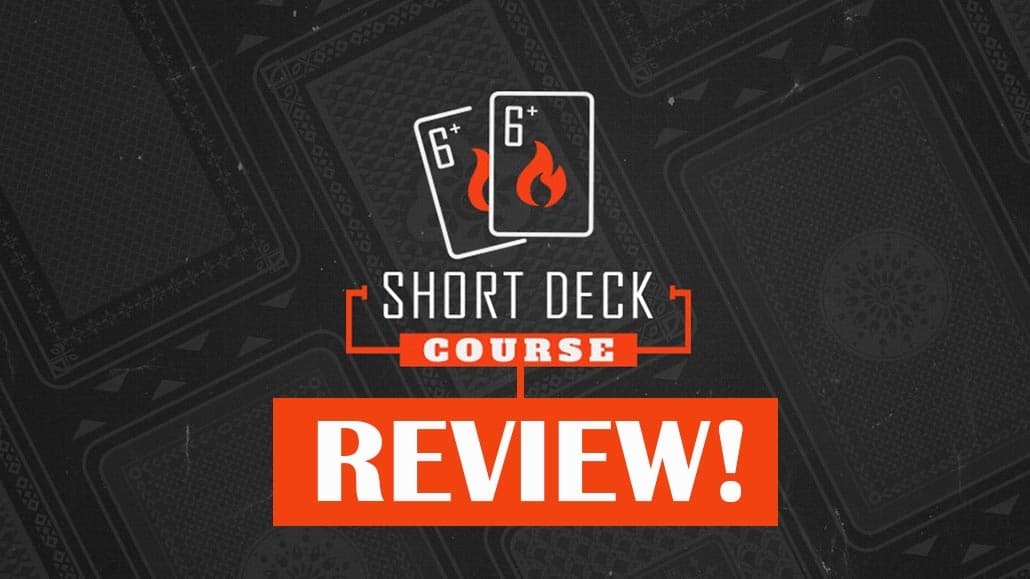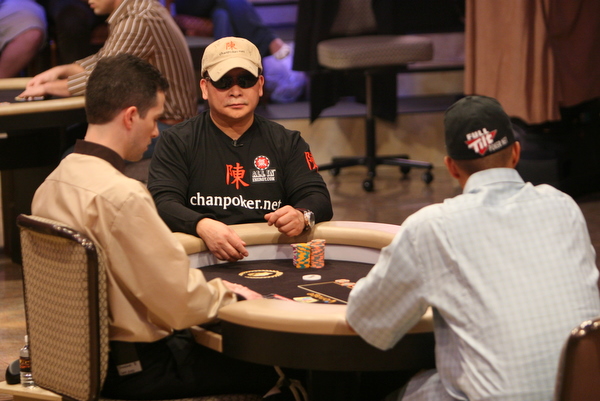Best Hands In Short Deck Poker
A-K is a good hand to examine first because in Short Deck, as in regular hold’em, it is a holding that often prefers to be all-in before the flop. Unless a player is making a massive overbet that. There are a few significant differences in the values of poker hands when playing Short Deck Hold’em. In the Short Deck Hold'em hand rankings: - A flush beats a full house - Three of a kind beat a straight. The process for developing the strategy charts is a tedious one. There are 2,598,960 possible five card hands in a 52 card deck. Here is a table showing all the possible video poker hands for a non-wild card video poker game. Each of the 2,598,960 hands must be examined.
Over the course of five entries in this series, we've gone over a number of relevant concepts applied to short deck hold'em. We've covered the basic rules, the odds, and delved into strategies applicable to preflop and postflop play.

With the groundwork for an understanding of short deck laid out, it's time to look over some hands wherein players are putting these concepts into practice.

To start off with, we'll look over a hand from the recent Triton Super High Roller Series Jeju HK$1,000,000 (~$128,000) Short Deck Ante Only.
At this point in the tournament, 16 players remained from a field of 81, so it was getting close to the money. Antes were 12,000 with a 24,000 ante on the button. Justin Bonomo started with about 950,000 on the button, with Gabe Patgorski covering and playing 1.5 million in the cutoff. Bonomo had recently been caught bluffing for double the size of the pot.
The Action

'Jungleman' Dan Cates opened action by calling in the hijack with , Patgorski called in the cutoff with and Bonomo checked his option on the double ante with .
The flop came and Cates checked. Patgorski bet 50,000 and Bonomo called, with Cates folding to leave them heads up.
The turn brought the and Patgorski slowed down with a check. Bonomo bet 100,000 and Patgorski called. On the river, Patgorski checked again and Bonomo stuck in all but the last few crumbs of his 789,000. Patgorski took some thinking time, but eventually conceded the pot.
Concept and Analysis
First off, we see in action a concept from Part 3 of this series. Isaac Haxton pointed out that players who aren't on the button are getting a great price to put in one more ante to try to see the flop and Cates does just this by limping in with a mediocre .
Patgorski just calls as well despite holding a decent suited ace. Remember, suited cards help you far less in short deck compared to regular no-limit, but this is still a hand many players will raise in this spot.
Bonomo opts to check and it goes three ways to a highly coordinated flop. Everyone has a little something here as Patgorski had top pair and a straight draw while the others each have a blocker to the current nuts. Patgorski bets about half of the pot, and given that he likely has the best hand here — Bonomo checked and could have any two, while Cates limped from late position — that seems sound enough.
Bonomo perhaps senses an opportunity. First off, if a ten comes out, he'll have a straight. While gutshots are an object of some derision when it comes to hold'em, we know from Part 2 of this series that in short deck they come in about a quarter of the time, which isn't insignificant.
Furthermore, he already has a blocker to the nuts and if a diamond hits, he has both a flush draw and another blocker to a strong hand. Plus, they're deep-stacked with a stack-to-pot ratio of more than four still. He has room to maneuver and opts to float.
On the turn, Bonomo not only still has a blocker to a straight, but he picks up the nut diamond blocker as the falls. Now, Patgorski checks and Bonomo has a pretty good bluffing opportunity. The fact that Patgorski bet the flop and the top card paired is a bit concerning, but it's not a given that he has trips. Furthermore, because this is short deck, even if he's already full — which isn't that likely because he'd have had to have limped a big hand — Bonomo is still drawing live in the worst-case scenario.
When Patgorski calls his bet, it seems most likely he has trip aces, with a straight also a possibility. He certainly could also have a low flush himself though, having limped in for the minimum in late position.
On the river, Bonomo picks up some showdown value that's almost certainly worthless. He probably needs to bluff to win the hand and he has the nut flush blocker, but what sizing should he choose? If he thinks Patgorski has at least trip aces, a small bet may not do it. Shoving for over the size of the pot likely gives him the best chance to induce a fold, and he does so.
Now, it's on Patgorski and the situation is tough. He has a straight and he has an ace in his hand to block some full houses that beat him, but Bonomo is most likely shoving this big for value with flushes.
Bonomo just checked preflop, so he could certainly have any two suited cards. What makes it especially hard for him to be bluffing, though, is his flop action. Heads up, it might be a little more plausible to think Bonomo might show up with some bluffs, but he called on the flop with a third player behind him.
Some of the plausible bluffs, as the commentators pointed out, would be hands that make a straight where Bonomo is turning his hand into a bluff. Especially plausible would be something with one diamond in it. Patgorski has to consider that a possibility, and in those cases he'd only be calling to chop.
Finally, there's a meta factor with Bonomo having recently been caught bluffing for over the pot. Does that make it more or less likely he's bluffing?
Who knows, but as Bobby Baldwin once said, the second bluff against a good player is the good one. And Bonomo got the second one through here.
Tags
tournament strategybet sizingbluffingblockersJustin BonomoGabe PatgorskiDan Catesshort deck hold’emsix-plus hold’empostflop strategyboard texturerangesrange readingTriton Super High Roller SeriesRelated Room
Full TiltRelated Players
Justin BonomoDan CatesGabe Patgorski
| Alternative names | Short-deck hold 'em |
|---|---|
| Type | Community card poker |
| Players | 2-10 |
| Skills required | Probability, psychology |
| Cards | 36 |
| Deck | French |
| Play | Clockwise |
| Card rank (highest first) | A K Q J 10 9 8 7 6 |
| Random chance | High |
Six-plus hold 'em (also known as short-deck hold 'em) is a community card poker game variant of Texas hold 'em, where the 2 through 5 cards are removed from the deck. Each player is dealt two cards face down and seeks to make the best five card poker hand from any combination of the seven cards (five community cards and their own two hole cards).[1]
Rules[edit]
Best Starting Hands In Short Deck Poker
The rules in terms of betting structures, play of the hand, and showdown are the same as in Texas hold 'em. However before play begins all cards 2 through 5 are removed (16 cards), thus the total number of cards in the deck is 36. Aces are high, but same as in Texas hold 'em, can make both low and high end of straights. For example the lowest straight would be (9x-8x-7x-6x-Ax) and the highest (Ax-Kx-Qx-Jx-10x). This changes the probability of hands and alters hand rankings.[2]
Modified hand rankings[edit]
| Rank | Name | Example |
|---|---|---|
| 1 | Royal flush | |
| 2 | Straight flush | |
| 3 | Four of a kind | |
| 4 | Flush† | |
| 5 | Full house† | |
| 6 | Straight† | |
| 7 | Three of a kind† | |
| 8 | Two pair | |
| 9 | One pair | |
| 10 | High card |
†Flush ranks higher than full house. In theory, three-of-a-kind ranks higher than a straight as the probability of achieving three-of-a-kind is lower than a straight in short-deck, however recent games have been ranking straight higher than three-of-a-kind which has become standard.[3] Some variations of six-plus hold 'em plays with standard Texas hold 'em hand rankings. When calculating for 5 card six-plus hold 'em where each player gets only 5 cards, straights rank higher than three-of-a-kind.
The 2018 Triton Poker tournament series hosted the first televised six-plus hold 'em tournaments. The first Triton Super High Roller HK$250,000 short deck ante-only event was won by Phil Ivey, earning him US$617,396.[4] The 2018 Triton tournaments ranked straights higher than three-of-a-kind.[5]
History[edit]
The game originated in 2014 and is popular among high stakes gamblers in Asia due to its high variance.[clarification needed] In 2015, Phil Ivey and Tom Dwan promoted the game in an online video showing this variant of Texas hold 'em which is frequently played in Macau, Hong Kong and Manila.[6][7]
Notes[edit]

- ^'Six Plus Hold'em'. PokerVIP. 13 June 2015. Retrieved 2017-08-28.
- ^Gheorghe, Florain (14 March 2016). 'The New Six Plus Holdem'. PokerTube. Retrieved 2017-08-28.
- ^DellaFave, Robert (2016-02-25). 'Six Plus Holdem Launches - How Will It Impact iPoker Liquidity?'. Online Poker Report. Retrieved 2017-08-28.
- ^Fast, Erik (2018-05-14). 'Phil Ivey Wins Triton Poker Montenegro $250,000 HKD Short Deck Event'. cardplayer.com. Retrieved 2018-05-17.
- ^CardsChat Tournament News (2018-05-14). 'Phil Ivey Wins 'Short Deck' Poker Tournament in Montenegro for $605K'. Cardschat. Retrieved 2018-05-17.
- ^Rettmuller, Charles (10 June 2015). ''Six Plus Hold'em' Promoted by Tom Dwan and Phil Ivey'. PokerTube. Retrieved 2017-08-28.
- ^Weldon, Alex (2015-06-11). 'What the Heck is Six-Plus Hold'em?'. Part Time Poker. Retrieved 2017-08-28.
External links[edit]
Short Deck Poker Strategy
- Six Plus Hold'em on PokerNews
- Beginners Tips on Sixplusholdem.com